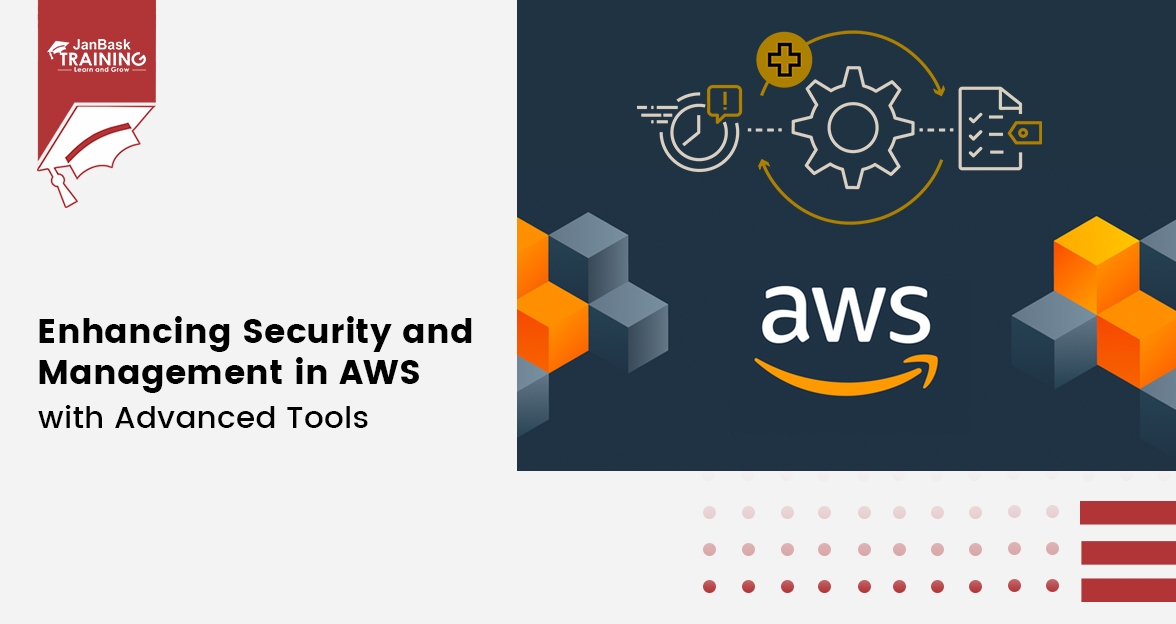Grab Deal : Flat 30% off on live classes + 2 free self-paced courses - SCHEDULE CALL

Mobile phones have become an integral part of our lives. Simultaneously, the Internet of Things (IoT) has achieved considerable traction, connecting various physical objects to the Internet for enhanced functionality and data exchange. Amazon Web Services (AWS) offers a comprehensive service suite that integrates mobile and IoT technologies seamlessly. In this blog post, we will delve into the world of Amazon AWS IoT and AWS Mobile app development to understand how these platforms are transforming industries with their powerful capabilities.
AWS IoT is a managed cloud platform that enables devices to connect securely with cloud applications while providing robust management features. With its scalable infrastructure, developers can build innovative solutions by leveraging real-time data from connected devices. Amazon AWS IoT's core component is the gateway that facilitates secure communication between devices and the cloud.
AWS IoT is a robust platform that allows developers to connect and manage devices securely with cloud applications. It provides a robust infrastructure that can handle large-scale deployments, making it ideal for IoT projects of any size.One key feature of AWS IoT is the device gateway, which acts as a bridge between connected devices and the cloud. This gateway ensures secure communication by implementing protocols such as MQTT (Message Queuing Telemetry Transport) and HTTPS (Hypertext Transfer Protocol Secure). These protocols encrypt data transmission, protecting sensitive information from unauthorized access.Developers can leverage Amazon AWS IoT's real-time data capabilities to build innovative solutions. For example, crop sensors can collect data on soil moisture levels or temperature in agriculture. This data can be sent to the cloud via AWS IoT, which can be analyzed in real-time using services like Amazon Kinesis Data Analytics or Amazon SageMaker. Based on this analysis, farmers can make informed decisions about irrigation schedules or identify potential crop diseases.
AWS IoT offers various management features that simplify device provisioning, monitoring, and software updates. Device Provisioning allows developers to quickly onboard new devices onto their network by securely assigning unique identities and credentials. With Device Monitoring and diagnostics tools like AWS CloudWatch or AWS X-Ray, developers gain insights into device health metrics and troubleshoot issues remotely.
Additionally, over-the-air updates enable seamless software updates for connected devices without manual intervention. Developers have control over when these updates are deployed to ensure minimal disruption to operations while keeping security patches up-to-date.
Furthermore, Amazon AWS IoT integrates seamlessly with other services within the broader AWS ecosystem. For instance:
AWS IoT provides a comprehensive solution for building scalable and secure IoT applications. With features like the device gateway, real-time data capabilities, management tools, and seamless integration with other AWS services, developers can focus on creating innovative solutions that leverage the vast potential of connected devices. Many self-learning aws courses are available that will make you an expert in this field.
An essential aspect of using Amazon AWS IoT is understanding how to work with compatible devices effectively. An "AWS IoT Device" refers to any physical object or software application capable of interacting with other devices through MQTT or HTTP protocols within an ecosystem powered by Amazon's infrastructure. By utilizing SDKs provided by Amazon, developers can easily connect their hardware or software applications as fully functional endpoints in an interconnected network.
AWS IoT devices are designed to be highly scalable and can range from simple sensors to complex industrial equipment. These devices have the necessary software and hardware components to securely connect, communicate, and interact with other devices or cloud services.One of the key features of AWS IoT is its support for MQTT (Message Queuing Telemetry Transport) and HTTP protocols. MQTT is a lightweight messaging protocol specifically designed for IoT applications, making it an ideal choice for resource-constrained devices with limited processing power or bandwidth. On the other hand, HTTP provides a more familiar interface for developers who are accustomed to working with web APIs.Amazon provides SDKs (Software Development Kits) to facilitate device connectivity in various programming languages such as Python, JavaScript, Java, C++, etc. These SDKs offer pre-built libraries and functions that simplify integrating Amazon AWS IoT functionality into your device's firmware or software application.
For example, consider a scenario where you want to build a smart thermostat using AWS IoT. You can start by choosing a compatible microcontroller board like Arduino or Raspberry Pi and installing an appropriate operating system. Then, you can use one of the available SDKs provided by Amazon - such as the Amazon IoT devices SDK for Python - to establish secure communication between your thermostat device and the AWS cloud.
The SDK will provide classes and methods to easily publish sensor data from your thermostat to an MQTT topic hosted on AWS IoT Core. You can also subscribe to specific topics to receive commands or configuration updates from other connected devices or cloud services.In this example, when someone sets their desired temperature through a mobile app connected to their Alexa voice assistant powered by Amazon Echo (another AWS IoT device), an MQTT message will be sent to your smart thermostat via the internet. Your device's firmware will then interpret this message using the SDK's functionality and adjust its settings accordingly.
Furthermore, AWS IoT offers rich features to manage and monitor your devices at scale. You can use the Device Shadow service to keep track of the desired state and reported state of each device. This allows you to synchronize device settings, whether temporarily offline or disconnected, easily.You can also take advantage of AWS IoT Rules Engine, which enables you to define rules that trigger specific actions based on incoming data from your devices. For instance, you could create a rule that sends an email notification whenever a room's temperature exceeds a certain threshold.
In summary, harnessing the potential of AWS IoT devices involves understanding their capabilities and integrating them effectively into your hardware or software applications. By leveraging MQTT and HTTP protocols along with Amazon's SDKs, developers can seamlessly connect their devices to an interconnected network powered by AWS infrastructure. With additional services like Device Shadows and Rules Engine, managing and monitoring these devices becomes easier while enabling advanced functionality such as remote control and automation.
Amazon's flagship service for managing connected devices – Amazon IoT Core – provides a highly scalable infrastructure for building intelligent applications across diverse industries such as healthcare, manufacturing, agriculture, and more. It allows seamless integration between edge computing systems and cloud-based analytics platforms while ensuring end-to-end security throughout every step.
Amazon IoT Core is a powerful tool that enables businesses to leverage the Internet of Things (IoT) and unleash their innovation potential. With its highly scalable infrastructure, it can handle millions of connected devices, making it suitable for both small-scale applications and large-scale deployments.One industry that significantly benefits from Amazon IoT Core is healthcare. In this sector, connected devices are crucial in patient monitoring, remote health management, and medication adherence tracking. By using Amazon IoT Core, healthcare providers can securely collect data from various medical devices, such as wearables or sensors, and analyze them in real-time to gain valuable insights into patients' conditions. This allows for timely interventions and improved patient outcomes.
Manufacturing is another industry where Amazon IoT Core proves invaluable. Connected machines on factory floors generate massive amounts of data that can be analyzed to optimize operations, improve efficiency, reduce downtime, and enhance overall productivity. For example, manufacturers can monitor machine performance in real-time by integrating Amazon IoT Core with manufacturing equipment sensors and actuators and proactively identify maintenance needs before breakdowns occur.Agriculture is yet another field benefiting from the capabilities offered by Amazon IoT Core. Farmers can use connected devices like soil moisture sensors or weather stations to remotely gather data about their crops' health status or environmental conditions within fields. By leveraging the power of cloud-based analytics platforms integrated with Amazon IoT core's seamless integration capabilities, farmers are able to make informed decisions regarding irrigation schedules or crop protection measures based on accurate real-time information.
Security is paramount when dealing with connected devices transmitting sensitive data over networks. With end-to-end security features embedded throughout every step of the process – starting from device authentication during connection establishment all the way through secure communication protocols – Amazon IoT Core ensures that only authorized users have access to critical information while protecting against unauthorized access attempts or tampering.
AWS Mobile Hub simplifies mobile app development by offering a range of tools designed specifically for creating high-quality, feature-rich applications. With Mobile Hub, developers can easily add user authentication, data storage, push notifications, and other essential features to their mobile apps. The platform also provides a unified console for managing app resources and monitoring performance.AWS Mobile Hub is a comprehensive platform enabling developers to build mobile applications quickly. It offers many tools and features to simplify app development and enhance the user experience.
One of the key features offered by AWS Mobile Hub is user authentication. With just a few clicks, developers can integrate secure sign-up and sign-in functionality into their apps, allowing users to create accounts or log in using popular social media platforms like Facebook or Google. This not only saves time for developers but also provides a seamless login experience for users.Another essential feature provided by AWS Mobile Hub is data storage. Depending on their specific requirements, developers can choose from various options, such as Amazon S3 (Simple Storage Service) or DynamoDB (NoSQL database). This allows them to store and retrieve data easily within their mobile applications, ensuring efficient data management and retrieval.
Push notifications are another powerful feature available in AWS Mobile Hub. Developers can leverage services like Amazon Simple Notification Service (SNS) to send targeted push notifications to users' devices based on predefined triggers or events within the app. These notifications help engage users by providing timely updates, alerts, or personalized content, ultimately enhancing the overall user experience.With its unified console, AWS Mobile Hub simplifies resource management for developers. They can easily configure settings for different services, monitor performance metrics, track usage analytics, and troubleshoot issues all from one centralized location. This streamlined approach saves time and effort while providing clear visibility into app performance.
To illustrate how AWS Mobile Hub empowers mobility further, let's consider an example:
It is an open-source JavaScript library enabling seamless integration between mobile apps and cloud services. It simplifies the process of building scalable backends for iOS, Android, React Native, Web, and Flutter applications by providing pre-built UI components and ready-to-use backend services like authentication, APIs (REST or GraphQL), storage solutions (S3), and more.

AWS Testing Training
Mobile technology and IoT have opened up new possibilities across industries. AWS IoT offers a robust framework for securely connecting devices to the cloud. At the same time, Amazon's suite of tools, such as AWS Mobile Development App and Amplify, empowers developers to create powerful mobile applications effortlessly. By leveraging these technologies in tandem with AWS's scalable infrastructure capabilities, businesses can unlock unprecedented opportunities for innovation in today's interconnected world. Gain a deeper understanding by enrolling in the AWS Solution Architect Training Course. It will open a vast career path for you.

A Comprehensive Guide to Aws Global Infrastructure


Enhancing Security and Management in AWS with Advanced Tools

Cyber Security

QA

Salesforce

Business Analyst

MS SQL Server

Data Science

DevOps

Hadoop

Python

Artificial Intelligence

Machine Learning

Tableau
Download Syllabus
Get Complete Course Syllabus
Enroll For Demo Class
It will take less than a minute
Tutorials
Interviews
You must be logged in to post a comment